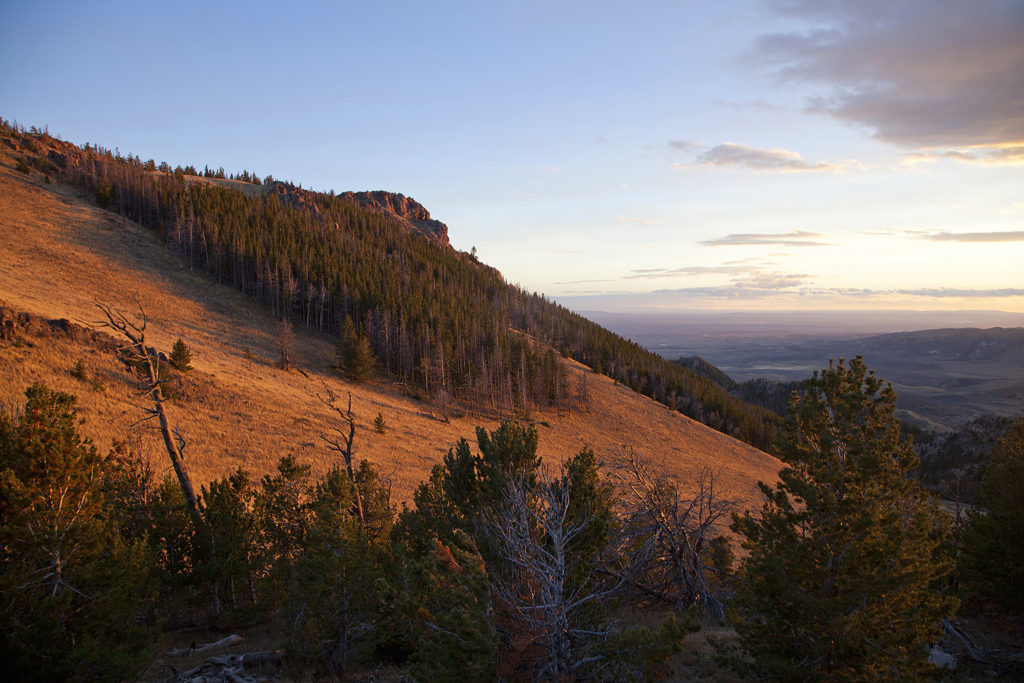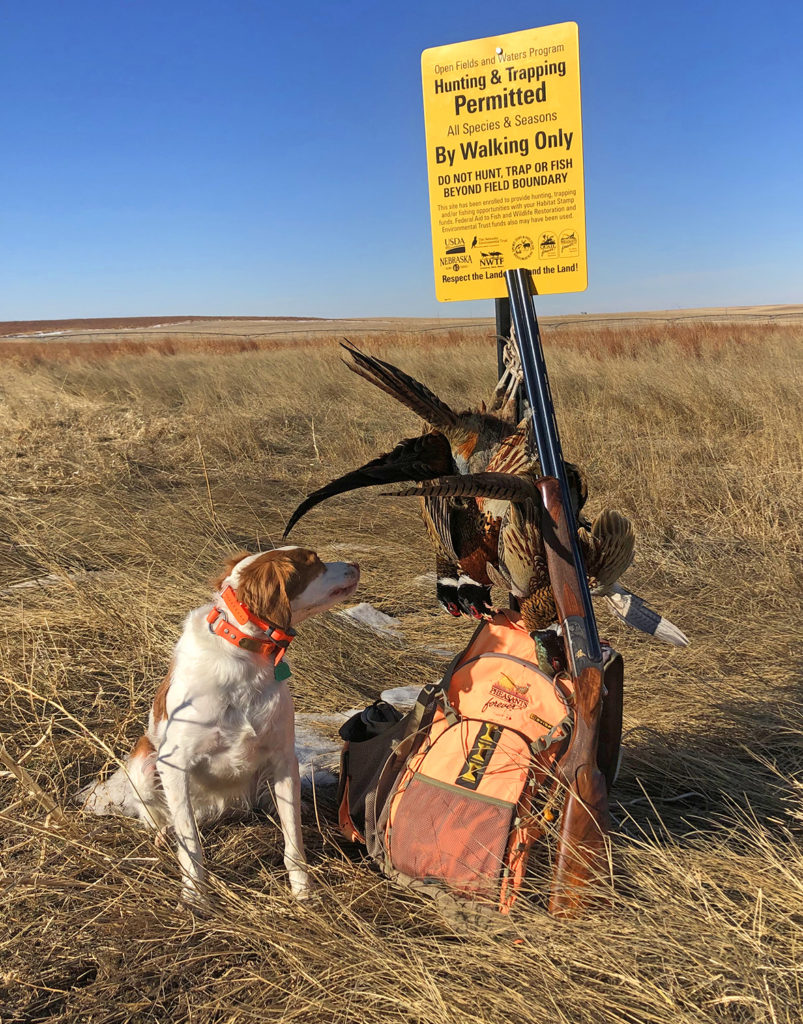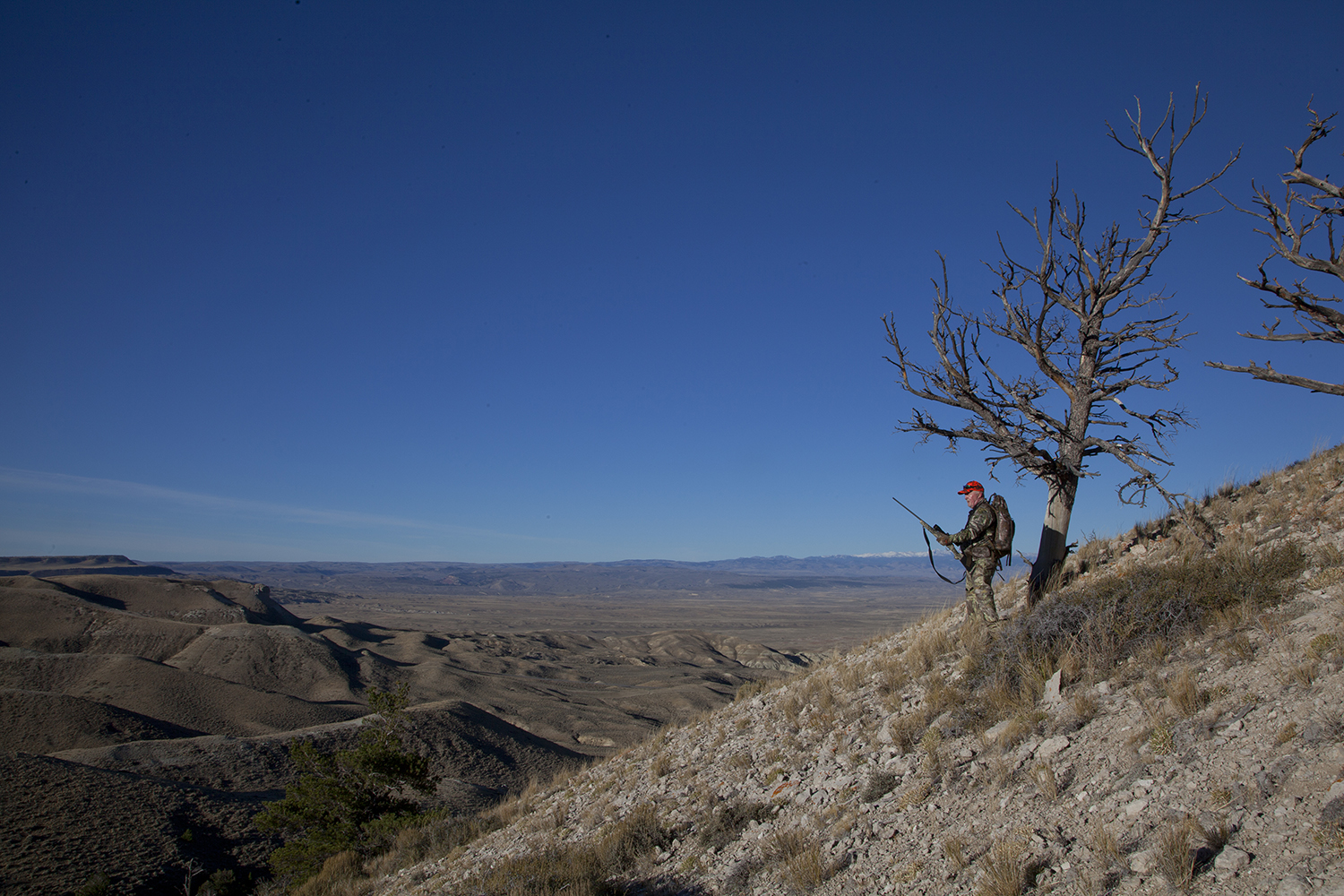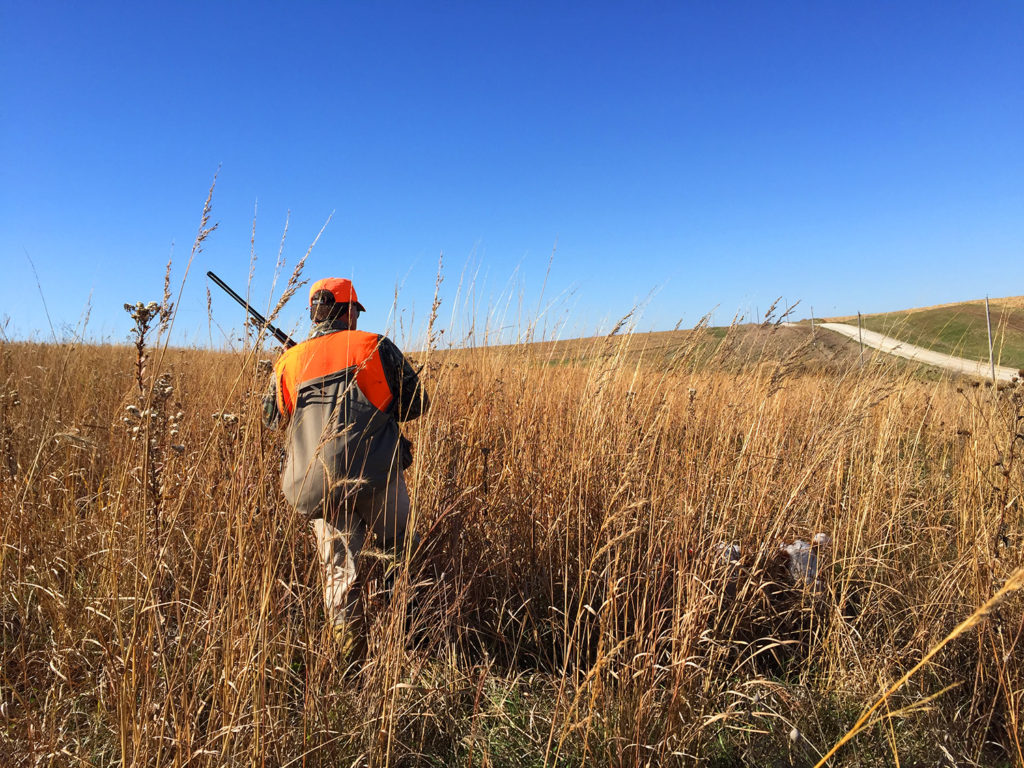I COME BACK TO IT AGAIN AND AGAIN:
“A thing is right when it tends toward the integrity, stability, and beauty of the biotic community. It is wrong when it tends otherwise”[i]— the ecologist and philosopher Aldo Leopold’s land ethic, set down in the summer of 1947, at the end of a long and illustrious career.
A graduate of Gifford Pinchot’s school of Forestry at Yale University in 1909, Leopold had started out as a disciple of the reigning commandment of the conservation movement of the time: the idea of wise use. The continent’s renewable natural resources existed for the benefit of man, the precept ran, but the sensible man would give those resources a chance to renew themselves. Wise use was sustainable use, the emphasis to fall equally on both words.
Yale’s version of this precept had grown from Pinchot’s experience with timber, and the training was intended to prepare America’s first generation of foresters to carry out the mission of the nascent U.S. Forest Service, the federal agency that was to oversee forest and grazing management on the system of national forests Pinchot and his good friend, Theodore Roosevelt, had established.
Leopold took the Pinchot utilitarian view of resource management to his first assignment with the Forest Service in Arizona where he applied it, as many other conservationists did at the time, to wildlife management as well as forestry. In some of his earliest writings, he was an enthusiastic supporter of predator control as a tool for producing game.
“For some unfathomable reason, there appears to have been a kind of feeling of antagonism between men interested in game protection and between some individuals connected with the stock growing industry,” he wrote in 1915. “. . . It seems never to have occurred to anybody that the very opposite should be the case, and that the stockmen and the game protectionists are mutually and vitally interested in a common problem. This problem is the reduction of predatory animals.”[ii]
It was a point of view that served as common ground in his day-to-day contacts with local ranchers, but even as he wrote it, his professional understanding of wildlife management was already shifting, partly in response to the catastrophic decline of many wildlife species and partly because of his own evolving perceptions. That same year, he wrote a Forest Service plan for wildlife management that began: “The breeding stock must be increased. Rare species must be protected and restored. The value of game lies in its variety as well as its abundance.”[iii]
It was also in 1915 that he was ordered to review a growing problem on the south rim of Grand Canyon, then a national monument managed by the Forest Service. Twelve years before, Teddy Roosevelt had advised Arizonans:
“I hope you will not have a building of any kind . . . to mar the wonderful grandeur, the sublimity, the great loneliness and beauty of the Canyon. Leave it as it is. You cannot improve on it. . . . The ages have been at work on it, and man can only mar it.”[iv]
In the decade after that speech, the south rim of the Canyon had rapidly become a tourist ghetto with ramshackle hotels, fly-by-night tour companies, electric signs, cesspools, and garbage dumps.[v] Leopold braved the stiff opposition of the entrepreneurs who were responsible for this mess and filed a sixty-eight-page report that recommended major limits on development. “The public visits the Grand Canyon to enjoy a great spectacle of nature,” he wrote in the 1916 report. “At the same time the public needs and demands certain material services and conveniences. The latter are necessarily out of harmony with the surroundings, and it should be the first object of an efficient administration to reduce this necessary discord to a minimum.”[vi]
As he gained experience over the next twenty-five years, Leopold’s ideas on conservation of wildlife and wild land continued to evolve from the strictly utilitarian approach he’d been taught. He couldn’t ignore the problems he saw in American land management, and he began to give more and more weight to the “wise” in wise use.
In 1922, he championed an entirely new concept— federal wilderness— with the establishment of the Gila Wilderness in New Mexico’s Carson National Forest. With several other wildlife experts of the time, he was forced to confront the problems with too many deer on Arizona’s Kaibab Plateau, the result of a generation of intense predator control. It was an experience he carried with him as he moved to the University of Wisconsin and faced similar problems with the north country’s burgeoning deer herd. He toured the hyper-managed forests of Germany and came to the conclusion that managing timber like a vegetable garden was not good for wildlife or people.
He became a founding member of the Wilderness Society; he served as president of the Ecological Society of America, and as his understanding deepened, he began to regret some of the things he had thought and done when he was young and certain.
He remembered the brooding black presence of Escudilla Mountain in eastern Arizona, the home of the region’s last grizzly.
“No one ever saw the old bear,” he wrote in 1940, “but in the muddy springs about the base of the cliffs you saw his incredible tracks. Seeing them made the most hard-bitten cowboys aware of bear. Wherever they rode they saw the mountain, and when they saw the mountain they thought of bear.”
At the behest of local ranchers, the federal authorities brought in a trapper who, in due time, killed the bear.

The end of a long day in the elk timber, Wyoming. Copyright 2017, Chris Madson, all rights reserved.
“It was only after we pondered on these things,” he continued, “that we began to wonder who wrote the rules for progress. . . . Escudilla still hangs on the horizon, but when you see it you no longer think of bear. It’s only a mountain now.”[vii]
And he remembered helping shoot a wolf and her pup in his early days in Arizona.
“We reached the old wolf in time to watch a fierce green fire dying in her eyes. I was young then, and full of trigger-itch; I thought that because fewer wolves meant more deer, that no wolves would mean hunters’ paradise. But after seeing the green fire die, I sensed that neither the wolf nor the mountain agreed with such a view.”[viii]
Twenty years after it was published, Leopold’s A Sand County Almanac became the New Testament of environmentalism, more influential in its way than even Silent Spring. A generation of flower children desperately wanted to believe in Leopold, but before he could be canonized, there was a significant problem to be confronted: He was a hunter. An influential segment of the environmental movement found the idea of a person killing an animal for food, let alone pleasure, simply too repugnant to contemplate.
So they tweaked his biography.
A number of years ago, I was invited to speak at the University of Colorado in Boulder. I can’t remember who issued the invitation, but I said I’d be honored to come speak on the philosophical power of the land ethic. It must have been the allure of the subject that caught local attention— I’m not known as an orator— but whatever the reason, there were a lot of people there that night. Sizable room, pretty well stuffed with humanity.
I stole liberally from Leopold’s marvelous writings, and the speech seemed to be well received. After I finished, the moderator asked if there were any questions or comments from the audience. A young woman at the back of the room raised her hand.
“I think Leopold was one of the greatest environmentalists,” she said. “But it’s really, really important to remember that he quit hunting. All you have to do is read that part where he shoots the wolf, and you can see that, when he got older, there was no way he would kill something.”
All the faces in the audience turned back to me.
“We share a love of Leopold’s writing,” I replied. “In fact, it was Leopold’s writing that made me decide to do my graduate work at the University of Wisconsin-Madison. I studied right next to the glass cabinet where they kept one of the bows Leopold made. It hung over the original manuscripts of Sand County. I’ve read and reread just about everything that ever appeared under Leopold’s byline, along with some stuff that’s never been published. My advisor was Aldo Leopold’s last graduate student. And I have to tell you, my advisor hunted woodcock with Leopold six months before Aldo died. Leopold was a hunter. All his life. Big game, small game, upland birds, waterfowl, snipe. Archery, rifle, shotgun. I know this is hard to absorb, but Leopold the hunter, Leopold the ecologist, Leopold the philosopher— they were all the same man.”
She wouldn’t believe it.
It wasn’t the first time I’d run into the argument. Yes, it goes, Saint Aldo might have been a sinner in his younger, testosterone-soaked days, but anyone who reads his work can tell that he gave up hunting with all those other antiquated nineteenth-century ideas he’d picked up in the Roosevelt era. Only then could he be accepted as a true environmentalist.
There’s a problem in this that clearly reaches far beyond a distortion of history and a great man’s reputation. It touches on the image of hunting itself.

The end of a successful day in western Nebraska with the young lady who made it happen. Copyright 2019, Chris Madson, all rights reserved.
There’s no doubt that the behavior of some hunters, in our time and in Leopold’s, richly deserves censure. Leopold himself had a jaundiced view of many of the things he’d seen hunters do in the field. While much of his writing dealt with the broader issues of human attitudes toward the land, his essays occasionally focused on hunting as he too often saw it practiced. He had a problem with the proliferation of “an infinity of contraptions, all offered as aids to self-reliance, hardihood, woodcraft, or marksmanship, but too often functioning as substitutes for them.” He mourned what he saw as the passing of the “go-light idea, the one-bullet tradition.”[ix]
But there’s also no doubt that hunting was a central part of his life from the time he was old enough to join his dad in the bottomlands of the upper Mississippi to the day the heart attack claimed him as he was fighting a neighbor’s grass fire in 1948. It was much more than recreation for him; it was a way of seeing; it was a way of understanding the natural world.
In one of his later essays, he described a lane he’d cut through the cover behind the little cabin he called “The Shack.” He called it the “deer swath,” and he used it as a way of keeping track of the deer that were trading back and forth between his property and the river. He pointed it out to a number of visitors and watched their subsequent notice of it. Always the scientist, he classified their reactions.
“Most of them forgot it quickly, while others watched it, as I did, whenever chance allowed. The upshot was the realization that . . . the deer hunter habitually watches the next bend; the duck hunter watches the skyline; the bird hunter watches the dog; the nonhunter does not watch.”[x]
In another essay, he wrote: “The true hunter is merely a noncreative artist. Who painted the first picture on a bone in the caves of France? A hunter. Who alone in our modern life so thrills to the sight of living beauty that he will endure hunger and thirst and cold to feed his eyes upon it? The hunter. . . . Critics write and hunters outwit their game primarily for one and the same reason— to reduce that beauty to possession. The differences are largely matters of degree, consciousness, or that sly arbiter of the classification of human activities, language. If, then, we can live without goose music, we may as well do away with stars, or sunsets, or Iliads. But the point is that we would be fools to do away with any of them.”[xi]
And in the actual almanac of A Sand County Almanac, Leopold filled the entire month of October with recollections of hunting. “I sometimes think that the other months were constituted mainly as a fitting interlude between Octobers,” he concludes, “and I suspect that dogs, and perhaps grouse, share the same view.”[xii]
There are many people of good heart and intention in the environmental community who struggle to understand how an intellect as incisive as Leopold’s could possibly reconcile his lifelong commitment to wildlife and wild land with his lifelong passion for the hunt. I don’t find that struggle surprising. My dad once said that trying to explain hunting to a nonhunter was like trying to explain sex to a eunuch— there was simply no common experience, in his view, to serve as a starting point. If any message could bridge that gulf, it was Aldo Leopold’s.
He understood hunting at the emotional level of a participant, at the scientific level of an ecologist, and at the ethical level of a philosopher. It was an almost unique combination, one that contains a critical lesson for anyone who aspires to follow in his footsteps. His admonition to humanity as a whole holds special significance for those of us who hunt: “When we see land as a community to which we belong, we may begin to use it with love and respect.”[xiii]
Amen.
[i] pp.224-225, Leopold, Aldo, 1949. A Sand County Almanac and Sketches Here and There. Oxford University Press, New York, NY.
[ii] p. 47. Flader, Susan and J. Baird Caledcott, 1991. The River of the Mother of God and Other Essays by Aldo Leopold. University of Wisconsin Press, Madison, WI.
[iii] P.146. Meine, Curt, 1988. Aldo Leopold, His Life and Work. University of Wisconsin Press, Madison, WI.
[iv] p.2, Roosevelt, Theodore, 1903. Address of President Roosevelt at Grand Canyon, Arizona, May 6, 1903. Facsimile of manuscript held at the Theodore Roosevelt Center at Dickinson State University, Dickinson, ND. https://www.theodorerooseveltcenter.org/Research/Digital-Library/Record/ImageViewer?libID=o289796&imageNo=2. Accessed April 22, 2019.
[v] p.145, Meine.
[vi] p.2. Johnston, Don P. and Aldo Leopold, 1916. Grand Canyon Working Plan. Aldo Peopold archives, Digital Collections, University of Wisconsin-Madison Libraries, Madison, WI. http://images.library.wisc.edu/awareImageServer/UWDCImageNav.jsp?collection=AldoLeopold&resource=EFacs/ALForest/ALGrandCanyon/reference/0004.jp2&size=M&entity=aldoleopold.algrandcanyon.p0004&title=Grand%20Canyon%20Working%20Plan%2C%20p.%20%5B4%5D. Accessed April 22, 2019.
[vii] p.134-137. Leopold, Aldo, 1949. A Sand County Almanac with Sketches from Here and There. Oxford University Press, New York, NY.
[viii] p.130. Leopold, Aldo, 1949. A Sand County Almanac.
[ix] pp. 180-181. Leopold, Aldo, 1949. A Sand County Almanac.
[x] p.126. Leopold, Aldo, 1953. Round River: From the Journals of Aldo Leopold. Oxford University Press, New York, NY.
[xi] pp.170-171. Leopold, Aldo, 1953. Round River.
[xii] pp.65-66, Leopold, Aldo, 1949. A Sand County Almanac.
[xiii] p. viii, Leopold, Aldo, 1949. A Sand County Almanac.


Leave a Reply
You must be logged in to post a comment.